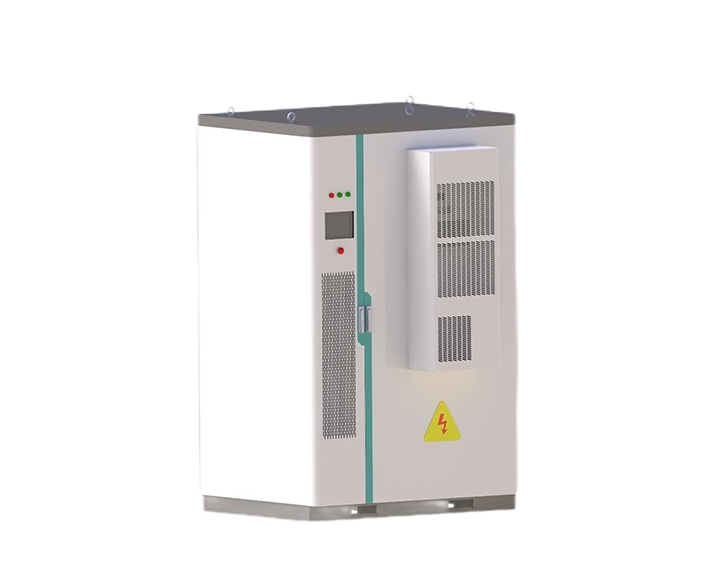Understanding Cabinet Lithium-Ion Batteries for Commercial and Industrial Applications
In the rapidly evolving domain of energy storage, cabinet lithium-ion batteries play a pivotal role, especially in commercial and industrial (C&I) applications. These batteries are designed for a variety of uses, from energy management to backup power solutions, serving businesses that require reliable and efficient energy systems.
Cabinet lithium-ion batteries are essentially large battery syste
2025-06-12

In the rapidly evolving domain of energy storage, cabinet lithium-ion batteries play a pivotal role, especially in commercial and industrial (C&I) applications. These batteries are designed for a variety of uses, from energy management to backup power solutions, serving businesses that require reliable and efficient energy systems.
Cabinet lithium-ion batteries are essentially large battery systems housed in protective enclosures, designed to offer scalability and manage various energy loads. One of their principal advantages is energy density; lithium-ion technology allows for a significant amount of energy to be stored in a compact space, making it ideal for settings where floor space is at a premium.
The architecture of cabinet lithium-ion batteries typically involves multiple modules, which can be configured in various ways to meet the specific energy demands of a facility. This modularity allows businesses to start with a smaller system and expand as their energy needs grow, making it a cost-effective solution over time.
Moreover, these batteries are known for their excellent cycle life, which means they can go through numerous charge and discharge cycles without significant degradation of performance. This longevity contributes to lower total cost of ownership and reduced maintenance needs, making them an appealing choice for businesses looking to invest in long-term energy solutions.
Safety is another crucial aspect of cabinet lithium-ion batteries. Modern designs incorporate advanced thermal management systems and battery management systems (BMS) that monitor temperature, voltage, and current. These systems help prevent overheating and ensure the battery operates within safe parameters, significantly reducing the risk of failure.
In addition to these benefits, cabinet lithium-ion batteries also support renewable energy integration. As more businesses turn to solar and wind energy, these batteries can store excess energy generated during peak production times for use during low production periods, thus optimizing energy utilization and lowering overall energy costs.
The environmental impact is also worth noting. Lithium-ion batteries are generally more environmentally friendly than traditional lead-acid batteries, primarily due to their higher efficiency and the potential for recycling. With the ongoing advancements in battery technology and recycling processes, the ecological footprint of lithium-ion battery systems is becoming increasingly favorable.
In summary, cabinet lithium-ion batteries are transforming the energy landscape for commercial and industrial applications. Their compact design, modular scalability, safety features, and compatibility with renewable energy sources make them an attractive option for businesses striving for efficiency and sustainability. As industries continue to evolve, understanding the benefits and functionalities of these battery systems will be crucial for making informed energy management decisions.
Cabinet lithium-ion batteries are essentially large battery systems housed in protective enclosures, designed to offer scalability and manage various energy loads. One of their principal advantages is energy density; lithium-ion technology allows for a significant amount of energy to be stored in a compact space, making it ideal for settings where floor space is at a premium.
The architecture of cabinet lithium-ion batteries typically involves multiple modules, which can be configured in various ways to meet the specific energy demands of a facility. This modularity allows businesses to start with a smaller system and expand as their energy needs grow, making it a cost-effective solution over time.
Moreover, these batteries are known for their excellent cycle life, which means they can go through numerous charge and discharge cycles without significant degradation of performance. This longevity contributes to lower total cost of ownership and reduced maintenance needs, making them an appealing choice for businesses looking to invest in long-term energy solutions.
Safety is another crucial aspect of cabinet lithium-ion batteries. Modern designs incorporate advanced thermal management systems and battery management systems (BMS) that monitor temperature, voltage, and current. These systems help prevent overheating and ensure the battery operates within safe parameters, significantly reducing the risk of failure.
In addition to these benefits, cabinet lithium-ion batteries also support renewable energy integration. As more businesses turn to solar and wind energy, these batteries can store excess energy generated during peak production times for use during low production periods, thus optimizing energy utilization and lowering overall energy costs.
The environmental impact is also worth noting. Lithium-ion batteries are generally more environmentally friendly than traditional lead-acid batteries, primarily due to their higher efficiency and the potential for recycling. With the ongoing advancements in battery technology and recycling processes, the ecological footprint of lithium-ion battery systems is becoming increasingly favorable.
In summary, cabinet lithium-ion batteries are transforming the energy landscape for commercial and industrial applications. Their compact design, modular scalability, safety features, and compatibility with renewable energy sources make them an attractive option for businesses striving for efficiency and sustainability. As industries continue to evolve, understanding the benefits and functionalities of these battery systems will be crucial for making informed energy management decisions.
Key words:
Related News


